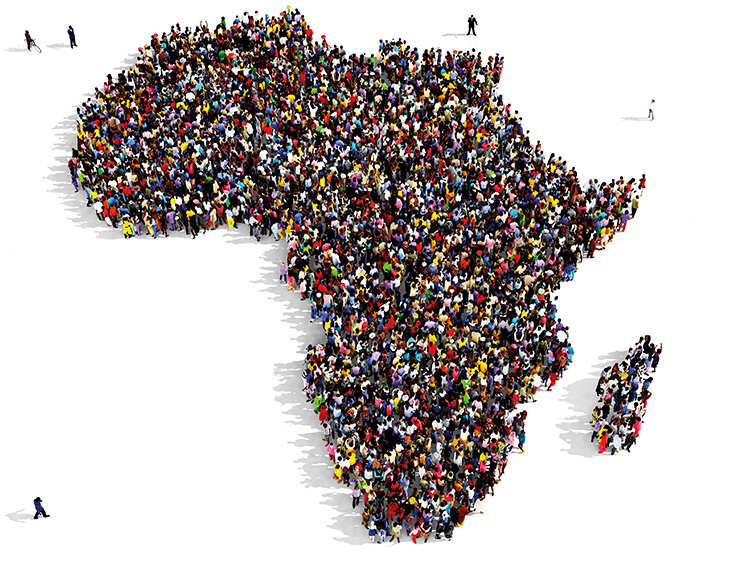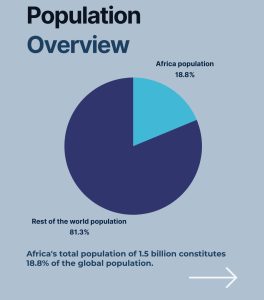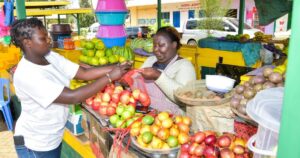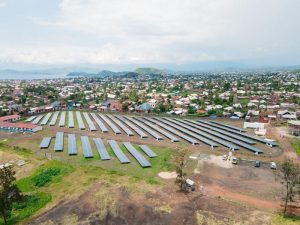Key Developments
Top 25 African Countries With the Highest Population: Growth Rates, Age Distribution, and Fertility Trends

Africa, the second-largest continent in the world, is home to a diverse array of countries with varied demographics, cultures, and socio-economic landscapes.
As of 2024, the continent’s population stands at approximately 1.5 billion people, making up about 17.89% of the global population.
This report provides an in-depth country-by-country guide of the most populous nations in Africa, highlighting key demographic indicators such as mortality rates, life expectancy, and factors influencing these statistics.

Top 25 Most Populous African Countries
1. Nigeria
Population – 229 million
Growth rate – 2.39% annually.
2. Ethiopia
Population – 129 million
Growth rate – 2.52% annually
3. Egypt
Population – 114 million,
Growth rate – 1.57% annually
4. Democratic Republic of the Congo (DRC)
Population – 105 million
Growth rate – 3.29% annually
5. Tanzania
Population – 69 million
Growth rate – 2.94% annually
6. South Africa
Population – 61 million
Growth rate – 1%.
7. Kenya
Population – 56 million
Growth rate – 2% annually
8. Uganda
Population – 49 million
Growth rate – 2.76%
9. Sudan
Population – 49 million
Growth rate – 2.6% annually
10. Algeria
Population – 46 million
Growth rate – 1.47%
11. Morocco
Population – 38 million
Growth rate – 0.98% annually
12. Angola
Population – 37 million
Growth rate of 3.05%
13. Mozambique
Population – 34 million
Growth rate – 2.83% annually
14. Ghana
Population – 34 million
Growth rate – 1.92% annually
15. Madagascar
Population – 31 million,
Growth rate – 2.41%.
16. Ivory Coast
Population – 29 million
Growth rate – 2.53%
17. Cameroon
Population – 29 million
Growth rate – 2.61% annually
18. Niger
Population – 28 million
Growth rate – 3.81% annually
19. Burkina Faso
Population – 23 million
Growth rate – 2.53% annually
20. Mali
Population – 24 million
Growth rate – 3.1% annually
21. Malawi
Population – 21 million
Growth rate – 2.6% annually
22. Zambia
Population – 21 million
Growth rate – 2.75% annually
23. Chad
Population – 18 million
Growth rate – 3.11% annually
24. Somalia
Population – 18 million
Growth rate – 3.11% annually
25. Senegal
Population – 18 million
Growth rate – 2.58% annually

Age Distribution
Africa is the youngest continent globally, with a median age of around 19.7 years.
This youthful demographic is a stark contrast to continents like Europe, where the median age is approximately 42 years.
Countries with the youngest populations include:
- Niger: Median age of 15.2 years
- Mali: Median age of 16.1 years
- Uganda: Median age of 15.9 years
- Angola: Median age of 16.5 years
- Chad: Median age of 16.4 years
The youthful population presents both opportunities and challenges, such as a potential demographic dividend but also the need for substantial investments in education and employment opportunities.
Fertility Rates
High fertility rates are a defining characteristic of Africa’s population dynamics.
The continent’s average fertility rate is around 4.5 children per woman, compared to the global average of 2.4.
Countries with the highest fertility rates include:
- Niger: 6.9 children per woman
- Somalia: 6.1 children per woman
- Chad: 5.9 children per woman
- Mali: 5.8 children per woman
- Angola: 5.7 children per woman
These high fertility rates contribute significantly to the continent’s rapid population growth.
Population Growth Rates: Top 10 African Countries
Africa’s population growth rates vary significantly across the continent, with some countries experiencing exceptionally high growth.
Here are the top 10 African countries with the highest annual population growth rates as of 2024:
- Niger: 3.8%
- Uganda: 3.6%
- Chad: 3.5%
- Angola: 3.4%
- Mali: 3.3%
- Burundi: 3.3%
- Democratic Republic of the Congo (DRC): 3.3%
- Benin: 3.2%
- Zambia: 3.2%
- Tanzania: 3.1%
These growth rates are driven by high fertility rates, declining mortality rates, and improvements in healthcare services.
These high growth rates have significant implications, affecting everything from economic development to infrastructure needs and social services.
Conclusion
Africa’s demographic landscape is characterized by rapid population growth, a youthful population, and increasing urbanization.
These trends present both opportunities and challenges for the continent’s development.
Understanding and addressing the implications of these demographic trends will be crucial for policymakers, businesses, and development organizations working in Africa.
This report highlights the need for continued investment in education, healthcare, and infrastructure to harness the potential of Africa’s growing population.
By adopting forward-looking policies and strategies, African countries can turn their demographic trends into a powerful driver of sustainable development.
References
- United Nations Department of Economic and Social Affairs, Population Division. (2023). World Population Prospects 2022. Link
- World Bank. (2023). World Development Indicators. Link
- African Development Bank. (2023). African Economic Outlook 2023.
- United Nations Economic Commission for Africa. (2023). Demographic Trends in Africa.
- Population Reference Bureau. (2023). World Population Data Sheet.
Related Articles
Register Now
Empower Africa Times Newsletter
Share :
You may also like...

Kenyan Tourism-Focused Venture Studio Purple Elephant Ventures Raises Additional $500,000
Nairobi-based Purple Elephant Ventures (PEV), a startup studio focused on tourism, has secured an extra $500,000 to boost its seed funding round to $5 million.

Enko Capital Secures Up to $25 Million IFC Commitment to Bridge SME Financing Gap in Africa
Enko Capital, a firm specializing in investments across Africa, has secured a significant commitment from the International Finance Corporation (IFC) for its new Enko Impact Credit Fund (EICF).

World Bank Agency MIGA Guarantees $50.3 Million for Nuru’s Solar Grids in Eastern DRC
The Democratic Republic of Congo (DRC)’s eastern region is set for a significant boost in electricity access thanks to a new project by Congo Energy Solutions (Nuru).
